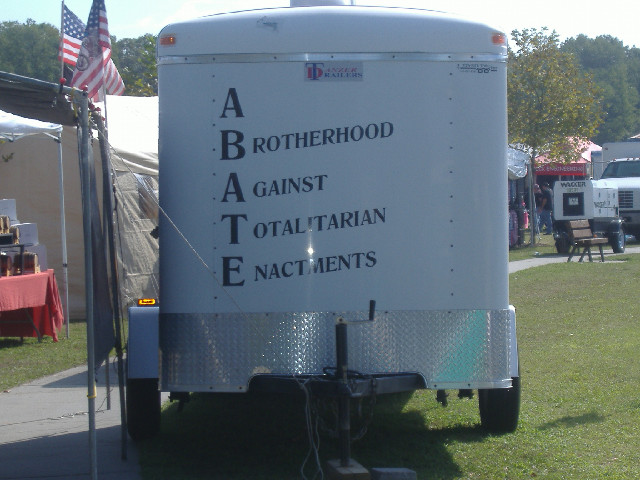One of the many e-mail sources I get from the Democrats alerted me to a website that the Democratic Senatorial Campaign Committee created. The website, dubbed “Bought by Big Oil“, makes the claim that thirteen incumbent Republican Senators or candidates for U.S. Senate seats are beholden to oil company interests through thousands in campaign contributions and in return many voted for tax breaks for these oil interests.
While the DSCC used figures from the reputable and nonpartisan Center for Responsive Politics and their website, opensecrets.org, they naturally left out much of the story. Before I get to that, though, I want to bring up what the Democrats considered to be the payoff for Big Oil by those who were in Congress at the time – a series of votes on a bill called the Tax Increase Prevention and Reconciliation Act of 2005 (in the 109th Congress, this was H.R. 4297.) For most, the DSCC is in a snit over a vote to accept a conference committee report that had these so-called tax breaks for Big Oil – but also had $34 billion in tax relief for those who would have been bumped up into paying the Alternative Minimum Tax. These are the “increases in middle-class taxes” the BBBO site refers to. (It’s worth noting that one portion of these Big Oil “tax breaks” only lasted months before it was rolled back, as noted in this report by the Congressional Research Service. Nothing in Washington is ever permanent, at least when it comes to the tax code.) As always, the issue was offsetting money which was returned to the taxpayer, with the Democrats taking the stand that they should be able to determine how much money you deserve to get back instead of it simply being yours in the first place.
Seeing an opportunity to bring more harm to an industry that’s already heavily regulated, DSCC Chair Senator Charles Schumer of New York passionately argued against these supposed tax breaks (which were in reality accounting practices allowed by Congress in previous legislation) and finally got into the position to exact revenge on these Republicans whom he thought voted incorrectly – thus you have this attack website.
So what was left out? Let’s take a look at the Big Oil payola figures that BBBO attributes to each Senator/candidate:
- Jim Inhofe (OK), $1,076,573
- Mitch McConnell (KY), $649,011
- Steve Pearce (NM), $596,324
- Lamar Alexander (TN), $364,675
- Pat Roberts (KS), $324,900
- Gordon Smith (OR), $293,325
- Elizabeth Dole (NC), $266,456
- Roger Wicker (MS), $263,435
- Bob Schaffer (CO), approximately $250,000
- Norm Coleman (MN), $244,900
- John Sununu (NH), $232,030
- Saxby Chambliss (GA), $199,242
- Susan Collins (ME), $124,943
That total of $4,885,814 seems awfully impressive, doesn’t it? Too bad that the BBBO hit squad fails to mention that the totals have accrued over several election cycles.
One great thing about the CRP website is that they break down contributions by election cycle and by industry, listing the top 20 donors by industry to those candidates who have enough donations to merit twenty different industries. For the most recent cycle, we can see just who has truly received big money from oil and gas interests. As you’ll notice, not all of these GOP Senators and candidates have gotten enough contributions in this cycle from the oil and gas industry to even place that business group in the top 20. Those who have enough include:
- Jim Inhofe, $315,500 (Oil and gas ranks 1st among contributor industries)
- Mitch McConnell, $255,750 (16th)
- Steve Pearce, $223,784 (1st)
- Pat Roberts, $159,100 (6th)
- Lamar Alexander, $155,350 (10th)
- Elizabeth Dole, $110,527 (12th)
- Bob Schaffer, $104,900 (7th)
- Saxby Chambliss, $98,000 (19th)
- Roger Wicker, $84,800 (7th)
- John Sununu, $69,900 (18th)
Collins, Coleman, and Smith did not receive enough from oil and gas interests to place that industry in their top 20 rankings. Still, that total between the ten of $1,577,611 is pretty impressive, is it not? And in the case of Inhofe and Pierce, does Schumer have a point?
Sorry Chuck, better luck next time. Let me throw one more set of numbers at you with this group of ten. It’s the percentage of oil and gas industry contributions vs. the total contributions each candidate has received in this cycle.
- Steve Pearce, 8.15%
- Jim Inhofe, 6.19%
- Pat Roberts, 4.01%
- Bob Schaffer, 2.26%
- Roger Wicker, 2.2%
- Lamar Alexander, 2.15%
- Mitch McConnell, 1.7%
- John Sununu, 1.03%
- Elizabeth Dole, 0.98%
- Saxby Chambliss, 0.92%
Yes, folks, it’s pretty much a proverbial drop in a barrel. If Big Oil is trying to buy these Senators with this contribution cash, it’s pretty certain that they’re someplace back in line. As a matter of fact, the oil and gas industry currently ranks 18th among all industries in political contributions. Over the last 18 years, the oil and gas industry has contributed over $221 million to candidates – but that pales in comparison to Big Labor, who’s shaken down their workers and otherwise managed to pony up over $40 million in PAC contributions in just this cycle alone.
And why would Big Labor want to be down on a business which employs over 1.8 million workers directly and creates 4.6 million ancilliary jobs? (One of these 1.8 million jobs is the position of one Todd Palin, who’s a member of the United Steelworkers union – the former Oil, Chemical, and Atomic Workers Union has become a part of that union after a series of mergers. You may have heard of Todd’s wife Sarah?) Perhaps the unions aren’t down on that aspect of Big Oil; however, they are a prime mover and shaker in Democrat circles. I’m going to turn Schumer’s game around and take a look at how much cash labor PACs have contributed to each of the 12 Democrat Senators who are up for re-election in 2008. Take a gander at these figures and tell me who’s bought who? The percentages of total contributions will be included this time:
- Tim Johnson (SD), $297,250 (5.79%)
- Frank Lautenberg (NJ), $253,000 (3.09%)
- Dick Durbin (IL), $244,500 (2.36%)
- Tom Harkin (IA), $241,275 (2.96%)
- Max Baucus (MT), $210,725 (1.94%)
- Jay Rockefeller (WV), $204,500 (3.91%)
- Mark Pryor (AR), $199,000 (3.53%)
- Jack Reed (RI), $195,450 (4.47%)
- Mary Landrieu (LA), $193,150 (2.13%)
- John Kerry (MA), $191,111 (1.85%)
- Carl Levin (MI), $149,300 (1.94%)
- Joe Biden (DE), $78,500 (1.13%)
All that union money adds up to $2,457,761 – far outstripping the oil and gas contributions to the GOP thirteen. Perhaps the total would be even higher but Big Labor is pretty cagey and certainly is aware that most of these thirteen have only token opposition in their re-election races. It’s also worthy of noting that Landrieu and Pryor also have a large contribution base from oil and gas interests. Senator Landrieu has accepted $251,700 in oil and gas money (placing it fourth among her industries) while Pryor has taken $103,250 (14th). Not only that, Pryor also voted with the GOP on the Senate vote which so incensed Schumer; however, he’s not been bought by big oil like the Republicans have.
Pryor is also one member of the newly-expanded “Gang of 16” who introduced a proposal that the American Petroleum Institute called “light on new production but heavy on new taxes.” Other members of this 16 Senator group who happen to be seeking re-election in this cycle are Republicans Saxby Chambliss, Norm Coleman, and John Sununu, along with Democrats Tim Johnson and Mary Landrieu. Looks like that oil company largesse is really bearing fruit, huh?
As is often the case, taking more than a superficial look at what is said by liberals generally shows the Potemkin village aspect of their arguments. Moreover, many’s the time that they don’t have their facts straight. One of my favorite regular commentors on the left made the claim to me recently that much of our Alaskan oil is being exported to Japan, so opening up ANWR wouldn’t do anything to help ease our dependence on foreign oil. I’m going to conclude with this document which uses Energy Information Administration data to show that the claim is bogus, and what we export in oil products are essentially the portions we no longer use because of environmental restrictions.
It’s apparent Senator Schumer and the DSCC aren’t interested in getting out all the facts and context with their website, which makes me think that most of their other rants should be taken at much less than face value as well. If Big Oil were truly buying these Senators it would be one thing, but these so-called tax breaks are money that’s being returned to shareholders and put to work finding new products and creating jobs. What is all the money Big Labor donates to the Democrats doing for us?
Maybe the better question is what is that union money doing to us?
I’d also like to thank Jane Van Ryan and Mark Kibbe at the American Petroleum Institute for their assistance with my research for this post.





